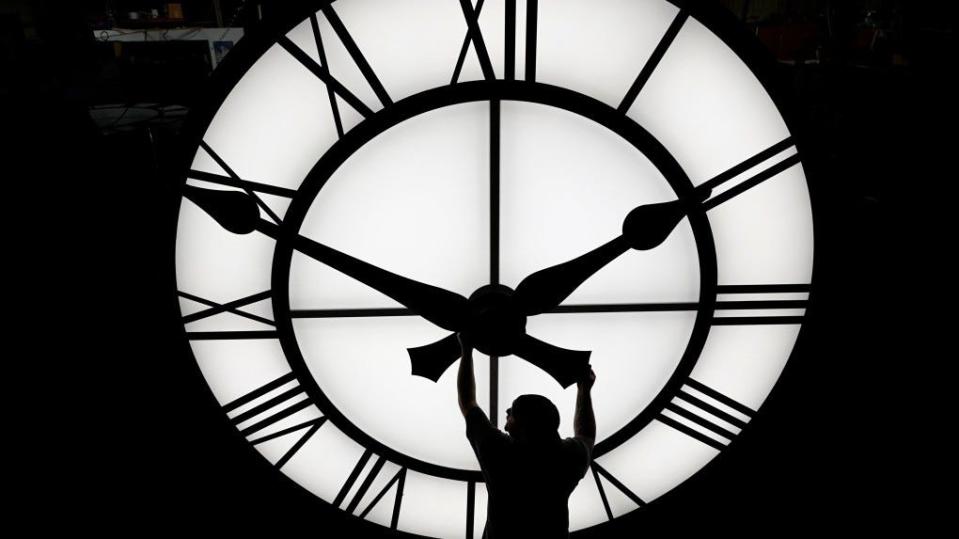When does daylight saving time end in 2023? What to know as clocks move back one hour.
Our favorite time of the year is fast approaching — the day when we get an extra hour of sleep. Or, if you are out the first Saturday in November, an extra hour at the bar or club. Here's everything to know about daylight saving time ending Nov. 5, 2023.
When does daylight saving time end in 2023?
Daylight saving time — which began March 12 — ends Nov. 5, with clocks moving back one hour.
The majority of the United States will move clocks from 2 a.m. to 1 a.m. to fall back. That means everyone in that majority will gain an hour of sleep.
It's recommended to set your clocks an hour back Saturday night before you go to bed. Your cell phones will do the work for you.
Daylight saving time history
Daylight saving time was introduced March 19, 1918, when the Standard Time Act was signed into law.
Daylight saving time originated in Germany when the country wanted to conserve fuel and power during World War I by extending daylight hours. The United States soon followed suit, according to the Department of Transportation.
After World War I, daylight saving time was nationally abolished, but allowed to continue on a state-by-state basis, according to the DOT. As a result, transportation confusion and collisions caused by different local times became an issue. Time zones had been introduced by major railroad companies in 1883 to resolve confusion and avoid train crashes caused by different local times.

In 1966, the Department of Transportation was founded to serve as a “focal point of responsibility for transportation safety” and given regulatory power over time zones and daylight saving time. Daylight saving time was implemented uniformly across the country, with dates for the twice-yearly transitions set by law.
The Uniform Time Act of 1966 establishes a system of uniform daylight saving time throughout the U.S. and its possessions, and provides that either Congress or the Secretary of Transportation can change a time-zone boundary, according to the DOT.
In 2007, the rules for daylight saving time changed, according to the National Institute of Standards and Technology. The Energy Policy of 2005 extended the length of daylight saving time to reduce energy consumption. It increased the duration of daylight saving time by about one month. It is now in effect for 238 days.
At present, daylight saving time begins at 2 a.m. the second Sunday of March and ends at 2 a.m. the first Sunday of November.
Why does daylight saving time matter?
Daylight saving time is when "daylight" begins an hour later in the morning and lasts an hour longer in the evening, according to the National Institute of Standards and Technology.
This allows the hour of daylight to stay coordinated with the time most people are active outside. Daylight saving time is supposed to save energy since during the warmer months majority will be outside and not home which saves energy.
What states don't participate in daylight saving time?
Not all states participate in daylight saving time. Arizona and Hawaii are the only two who have opted out.
U.S. territories that don't participate are Guam, the Northern Mariana Islands, American Samoa, the Virgin Islands and Puerto Rico, according to an article by Knox News.

Why doesn't Arizona and Hawaii participate in daylight saving time?
Hawaii opted out of the Uniform Time Act because of how close the state is to the equator. It makes daylight saving time unnecessary because the sun rises and sets around the same time each day year-round.
Arizona once participated in 1967, but the consumption of energy spiraled out of control. The majority of the country was saving fuel but in Arizona, they used more energy to handle the extra hour of daylight according to an article in 2018 by Arizona State University.
The Navajo Nation which is the northeast corner of the state does continue to participate in daylight saving.
Wait, I thought daylight saving time would be permanent?
While the U.S. Senate unanimously approved a bill called the Sunshine Protection Act in 2022 to permanently extend daylight saving time, the measure has not yet been signed into law by President Joe Biden as it hasn't yet been passed by the U.S. House of Representatives.
When does daylight saving time start in 2024?
Daylight saving time starts Sunday, March 10, 2024.
When does daylight saving time end in 2024?
Daylight saving time will end on Sunday, Nov. 3, 2024.
No savings about it.
The correct term is daylight "saving" (not savings) time, according to USA Today. However, the incorrect term “daylight savings time” is commonly used, especially in Australia, Canada and the United States. It's also supposed to be lowercase, not uppercase, according to the Associated Press stylebook.
Chandra Fleming contributed to this report.
Follow Detroit Free Press on Twitter (@freep), Instagram (@detroitfreepress), TikTok (@detroitfreepress) and like us on Facebook (@detroitfreepress).
Contact Amy Huschka: ahuschka@freepress.com or follow her on Twitter (@aetmanshuschka).
Stay connected and stay informed. Become a subscriber.
This article originally appeared on Detroit Free Press: Daylight saving time 2023: When to change clocks

